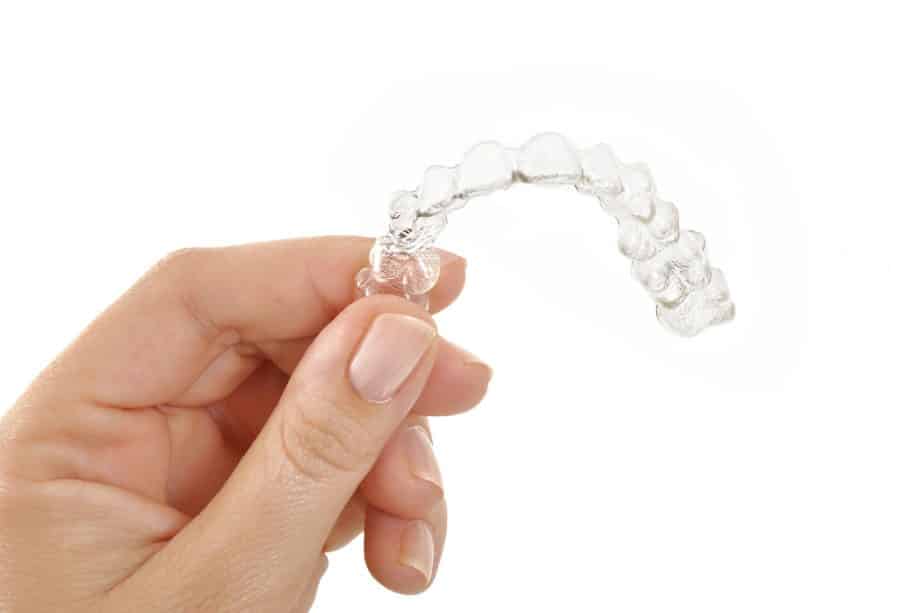Invisalign is one of today's best ways to straighten teeth and improve your smile. The process is often faster than braces, taking approximately 12 to 18 months from start to finish.
Advantages of Invisalign
When compared to other modern orthodontic treatments, Invisalign has several distinct advantages:
Discreet
Most people will not notice that you are straightening your teeth with Invisalign. The clear, medical-grade plastic aligners nearly disappear when worn. Since many older teens and adults are wary of the extra attention they may receive with conventional braces, Invisalign makes good sense.
Comfortable
The aligners fit snugly and are smooth to the touch. Unlike braces, Invisalign has no sharp edges, brackets, or wires. It will not irritate the sensitive tissues inside your mouth.
Easy Care
Unlike braces, it is easy to clean and care for Invisalign. You can clean your aligners with clear liquid antibacterial soap or branded crystals. You will not have to purchase extra cleaning supplies like interproximal brushes and floss threaders.
No Food Restrictions
Since Invisalign comes out for eating and drinking, you can have anything you like. If you properly care for your teeth and aligners, you won't have to avoid foods like popcorn, candy, and nuts. Be sure to clean your teeth and the aligners thoroughly after each meal and snack.
Better Oral Hygiene
The removable aligners allow you to keep your teeth significantly cleaner than with braces. You won't experience the headache of brushing and flossing around metal parts. Since you can keep your teeth cleaner, you will have a lower chance of developing periodontal disease and tooth decay after treatment. Patients with Invisalign have better oral health for a lifetime.
Invisalign Vs. Braces
While Invisalign has many advantages over braces, both methods have pros and cons.
Braces are better for younger children who are missing some permanent teeth. Braces can be a valuable part of an interceptive orthodontic treatment plan.
Patients may also need braces in case of severe dental bite issues or jaw malformation. Invisalign can handle minor to moderate dental bite problems with the addition of elastics.
The Invisalign Process
Step 1: Consultation
You will meet with the doctor at your first appointment and discuss your treatment expectations. The doctor will answer questions and explain the process.
During the same appointment, the doctor will use a digital intraoral scanner to take photos inside your mouth. The scanner software assembles these photos into a 3-D digital model of your teeth, gums, and other oral tissues. Using this data, the doctor designs your custom Invisalign system.
Step 2: Wearing Invisalign
After the aligners return from the dedicated lab, you will start wearing them. As you move gradually from one aligner to the next, they will gently shift your teeth into new positions.
You will wear each aligner for roughly two weeks before progressing to the next. You will see the orthodontist every four to six weeks for regular checkups.
Step 3: Completing Treatment
After about 12 to 18 months, you will be finished with your treatment. Your teeth will be straight and even. You can enjoy the benefits of your new, healthier smile.
Step 4: Retainers
After wearing Invisalign, you must wear your retainer as prescribed. If you do not wear your aligner as your doctor directs, your teeth will slip back to their previous positions, and you will lose your investments of money and time.
Frequently Asked Questions About Invisalign
Who is a good candidate for Invisalign?
Most patients who need orthodontic correction are good candidates for Invisalign:
- All permanent teeth present
- No missing teeth
- Healthy gums
- No untreated tooth decay
- Ability to closely follow directions
- Ability to wear aligners for 22 hours a day, removing them to eat, drink, and keep the aligners clean
Can I see any dentist for Invisalign?
While general and family dentists receive training in Invisalign procedures, seeing an orthodontist is preferred. Orthodontists have a better understanding of the way teeth move and the way they should fit together. They can provide more sophisticated treatment and handle problems like overbites with Invisalign.
Call Attleboro Pediatric Dentistry
Contact a qualified orthodontist like Attleboro Pediatric Dentistry if Invisalign appeals to you. Dr. Hannawi-Tadros can provide customized treatment with excellent results. Please call our Attleboro, MA, office at 508-409-6160 to schedule a consultation today.


